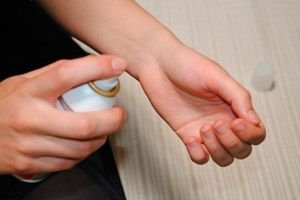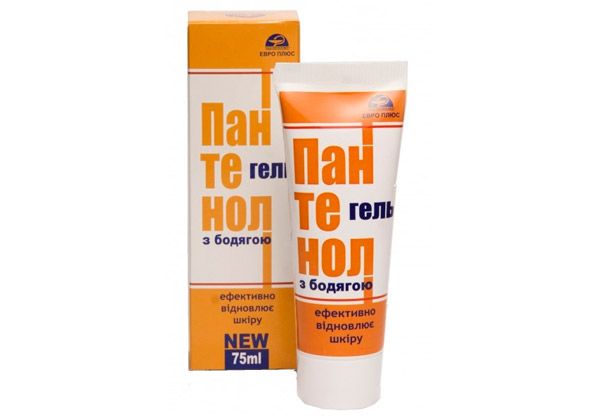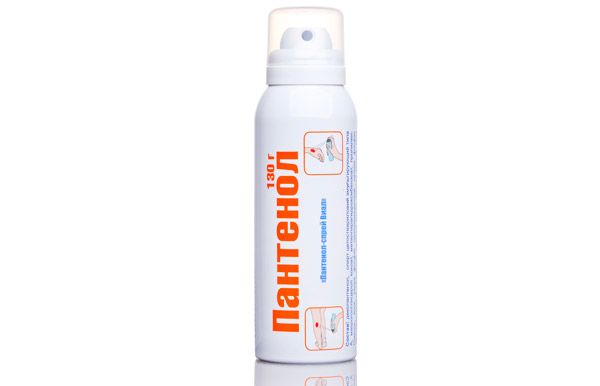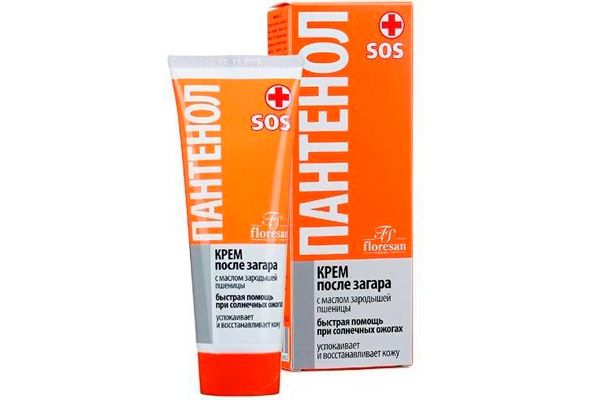
All iLive content is medically reviewed or fact checked to ensure as much factual accuracy as possible.
We have strict sourcing guidelines and only link to reputable media sites, academic research institutions and, whenever possible, medically peer reviewed studies. Note that the numbers in parentheses ([1], [2], etc.) are clickable links to these studies.
If you feel that any of our content is inaccurate, out-of-date, or otherwise questionable, please select it and press Ctrl + Enter.
Panthenol for burns
Medical expert of the article
Last reviewed: 03.07.2025

Panthenol ointments, creams and sprays for burns are effective external agents that promote the regeneration of burnt tissue in areas exposed to the destructive effects of high temperatures, chemicals or sunlight.
Panthenol ointment or cream for burns, diaper rash, cracks and other skin damage is produced under the trade names: Dexpanthenol, D-Panthenol, Bepanten, Bepanten plus (with chlorhexidine), Pantoderm, Pentesol.
Active ingredients
Pharmacological group
Pharmachologic effect
Indications panthenol to treat burns
In addition to the fact that doctors recommend using Panthenol for burns, the indications for the use of all listed forms of this product include:
- skin irritations;
- acne;
- abrasions, scratches, chafing, diaper rash and bedsores;
- cracking of the skin of various localizations and etiologies, as well as sore nipples in breastfeeding women;
- dermatoses of various etiologies, contact dermatitis (including the so-called diaper dermatitis in children);
- eczema (idiopathic) in the erythematous and papular stages;
- trophic ulcers;
- treatment of superficial wounds that heal by scarring (to stimulate epithelialization), as well as deeper wounds covered with a skin flap or transplant (for better engraftment).
Pharmacodynamics
The active component included in the ointment, cream, gel or spray for burns Panthenol - dexpanthenol - is a soluble derivative of provitamin B5, which is pantothenic acid. This acid is important for hematopoiesis (hemoglobin synthesis), immunity (antibody production), intracellular and general metabolism. Pantothenic acid is essential for the synthesis of the acetylation coenzyme - coenzyme A (CoA), which provides many biochemical processes in the body, including repair and regeneration of damaged tissues.
After using any form of Panthenol for burns, diexpanthenol is absorbed into the upper layers of the skin, where an intra-tissue reaction of its transformation into pantothenic acid occurs. Local increase in the concentration of vitamin B5 causes: activation of metabolism in the cells of the epidermis, subcutaneous tissue and mucous membranes; acceleration of the formation of new cells to replace damaged ones; stimulation of collagen production.
As a moisturizing substance, diexpanthenol stabilizes the skin's barrier function, increasing its hydration. In addition, Panthenol ointment for burns has an anti-inflammatory and antipruritic effect, reduces hyperemia.
Dosing and administration
Ointment, gel or cream D-Panthenol for burns (Pentenol) should be applied in a thin layer to the damaged area up to four times a day (the skin should be dry).

Spray for burns Panthenol, Bepanten or Pantesol is applied to the skin by spraying (2-3 times a day). In both cases, overdose of this drug was not noted by the manufacturers.

Also, its interaction with other drugs has not been noted.
Contraindications
Ointments, creams, gels and spray Panthenol for burns have only one contraindication - hypersensitivity to substances. There are no contraindications for their use during pregnancy and breastfeeding, as well as in pediatric practice (starting from the neonatal period).
Side effects when using Panthenol (skin rashes and itching) are rare - due to the absence or minimal adsorption of the active pharmacological component of the ointment, cream or gel into the bloodstream.
 [ 12 ]
[ 12 ]
Panthenol analogues for burns should contain substances whose action is similar to that of dexpanthenol. Such substances include wheat germ oil, royal jelly, propolis. Also, Panthenol for burns can be replaced by aloe liniment; Solcoseryl ointment; Rescuer cream-balm; Actovegin ointment, cream or gel.
 [ 19 ]
[ 19 ]
Attention!
To simplify the perception of information, this instruction for use of the drug "Panthenol for burns" translated and presented in a special form on the basis of the official instructions for medical use of the drug. Before use read the annotation that came directly to medicines.
Description provided for informational purposes and is not a guide to self-healing. The need for this drug, the purpose of the treatment regimen, methods and dose of the drug is determined solely by the attending physician. Self-medication is dangerous for your health.


